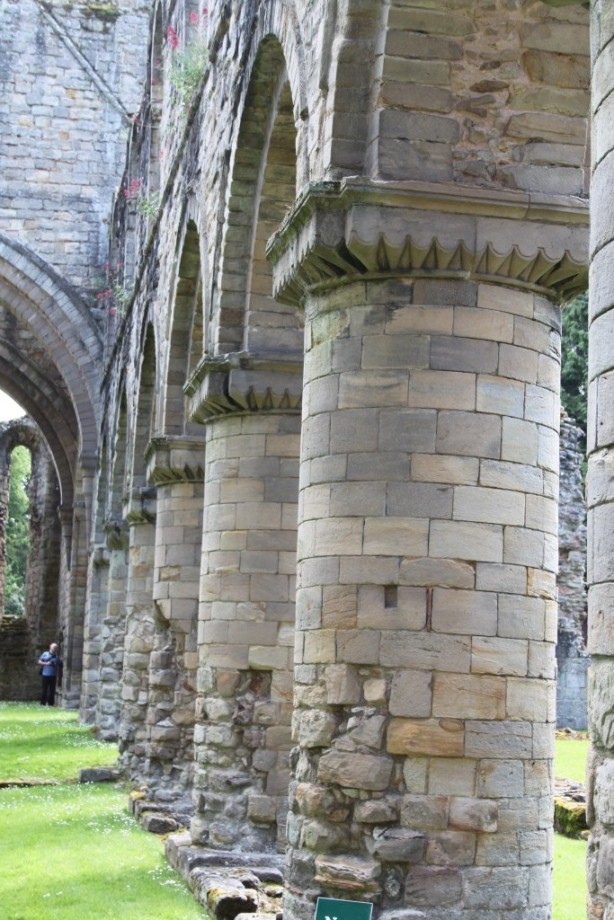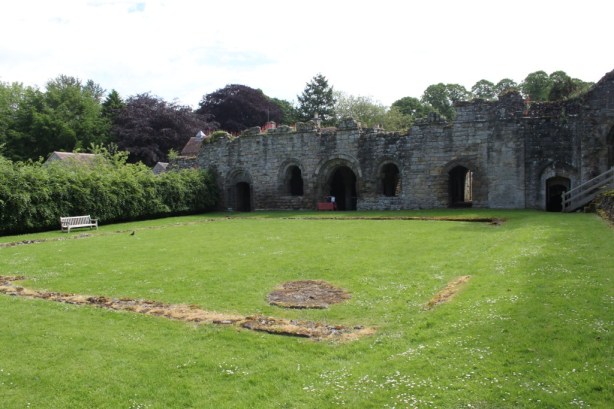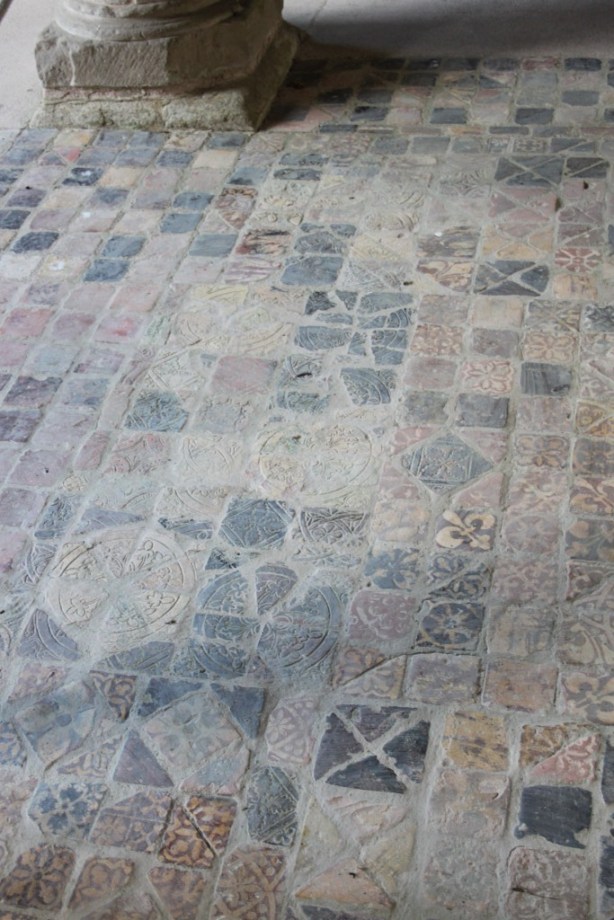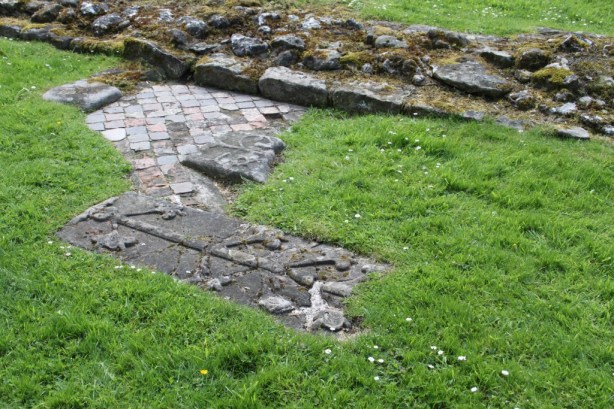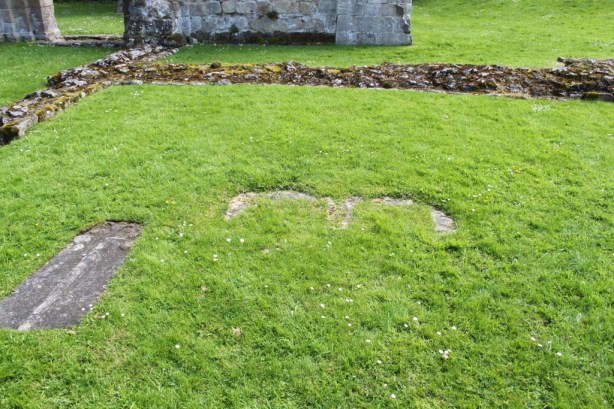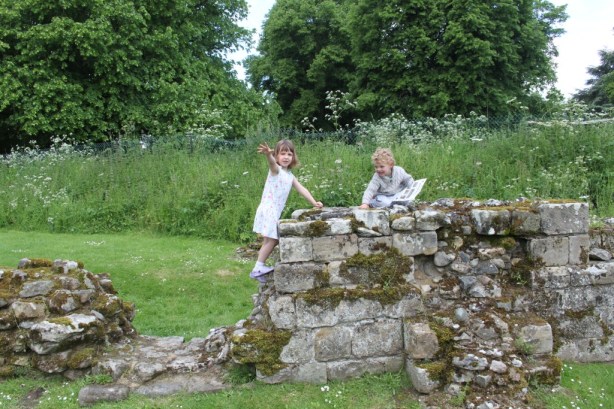Re-posted from Howard’s Archaeodeath blog. In the Past in its Place project we are exploring how memories are located in cathedrals, ancient habitations and the wider landscape. Here, I muse over how the dispersal of tombs and memorials, and the heritage management of the ruins of Cistercian monasteries, is more than a casual ‘forgetting’ of the dead, but an overt dimension of heritage interpretation with its focusing on the religious and economic life of medieval monks that downplays the dynamic relationships between patrons and abbeys in which memory was key.
I recently visited Buildwas Abbey, Shropshire, a site managed by English Heritage and staffed that day by one of its most friendly of employees. Beside the River Severn, this is a perfect ruin of a 12th-century Cistercian house, suppressed in 1536 and adapted into a secular mansion.
It is truly a ‘perfect ruin’, together with woodland walks down to the river. It was a great stop-off en route back from Oxfordshire to North Wales. For me this was a real nostalgia visit, since I last went there as a kid myself. Here are some general pictures of this superb ruin with the neatly trimmed grass that typifies EH sites.
I have previously aimed a broad criticism at many heritage sites for their denial or suppression of death: both with regard to the funerary uses and reuses of the structures and remains subject to study and the reluctance to incorporate memorials at these sites to the modern dead.
I noticed only two areas of medieval funerary activity displayed for the visitor. Neither are labelled or find discussion in detail. First, there is the outline of a grave in the Chapter House floor: this building would of course have been a focus of very prestigious burials of abbots and lay patrons.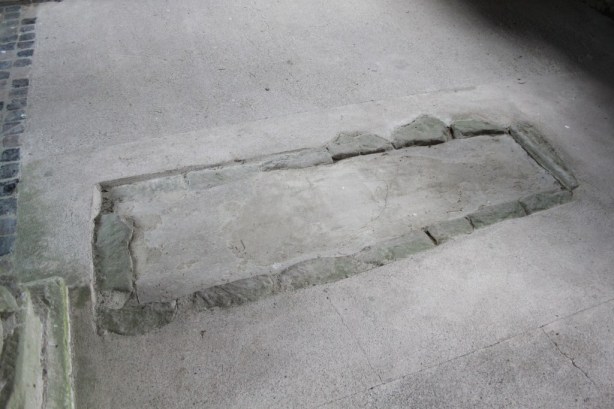
Second, in the south aisle of the nave of the monastic church were some further fragmentary memorials, presumably of very late medieval date.
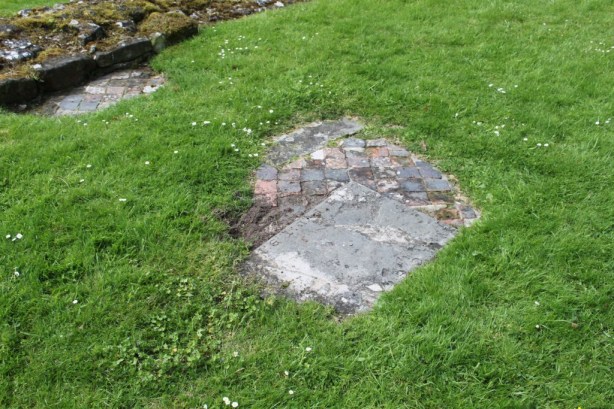 What strikes me is how this so markedly fails to convey the funerary roles of these sites within the societies of the 12th to early 16th centuries; their role as foci of patronage in exchange for chantries and burials of the secular elite. At some Welsh Cistercian sites, like Strata Florida and Valle Crucis, and some of the Yorkshire monastic sites, one can get a fuller sense of this funerary dimension. This is conveyed either by monastic graves/grave-slabs on display, but also museum displays showing funerary-related finds from excavations. Buildwas has none of these.
What strikes me is how this so markedly fails to convey the funerary roles of these sites within the societies of the 12th to early 16th centuries; their role as foci of patronage in exchange for chantries and burials of the secular elite. At some Welsh Cistercian sites, like Strata Florida and Valle Crucis, and some of the Yorkshire monastic sites, one can get a fuller sense of this funerary dimension. This is conveyed either by monastic graves/grave-slabs on display, but also museum displays showing funerary-related finds from excavations. Buildwas has none of these.
This is not a criticism of the manner in which Buidwas is displayed, but it is still an important issue for thinking about how these sites operated. The standard narratives of Cistercian monasteries focus on the religious and economic lives of their inhabitants, and the ‘lives’ of the above-ground ruins.
I would suggest that our narratives struggle to connect and convey the mortuary and commemorative dimensions of these prominent and important institutions in the later medieval landscapes of the British Isles.
Likewise, while some other Cistercian monasteries, as ruins that attract affinities from visitors there are memorials to those whose ashes are scattered in the grounds. Here, as at many EH sites, there are none.
So does this mean that Buildwas Abbey, at least in so far as it is presented to the public today, is a death denying landscape? Is Buildwas a landscape of forgetting the many dead interred beneath its burial grounds, buildings and passage ways? Have you encountered similar well-managed beautiful ruins that not only evoke the timeless romance of entropy arrested, but are complicit, and sometimes very active, in refusing death – and mortality more generally – to get a look in?
Still, my death obsession put aside, these were fabulous ruins to walk around, run around and for the kids to climb on, defying the warning signs telling them not to. Sorry EH: there’s no stopping them!



